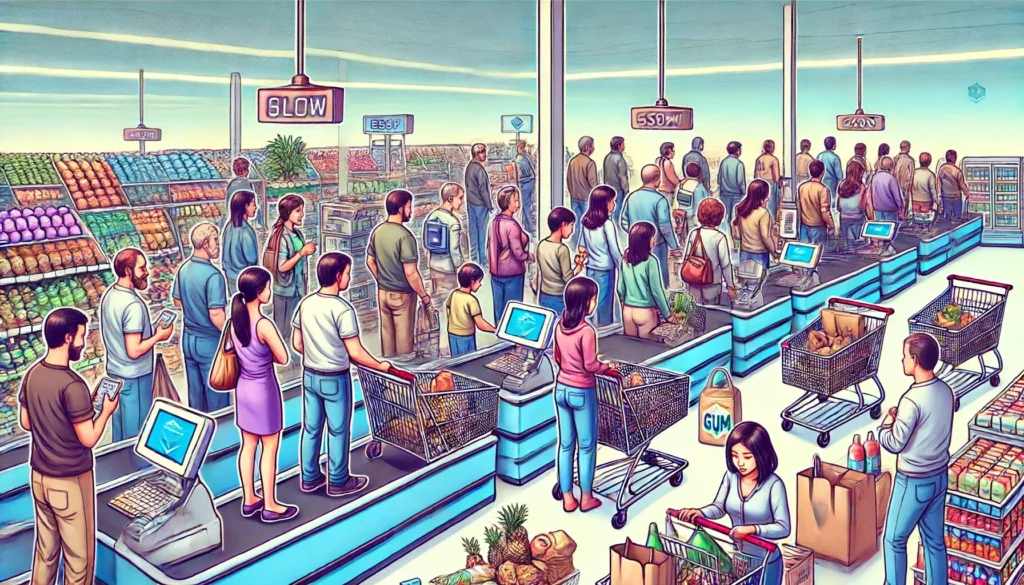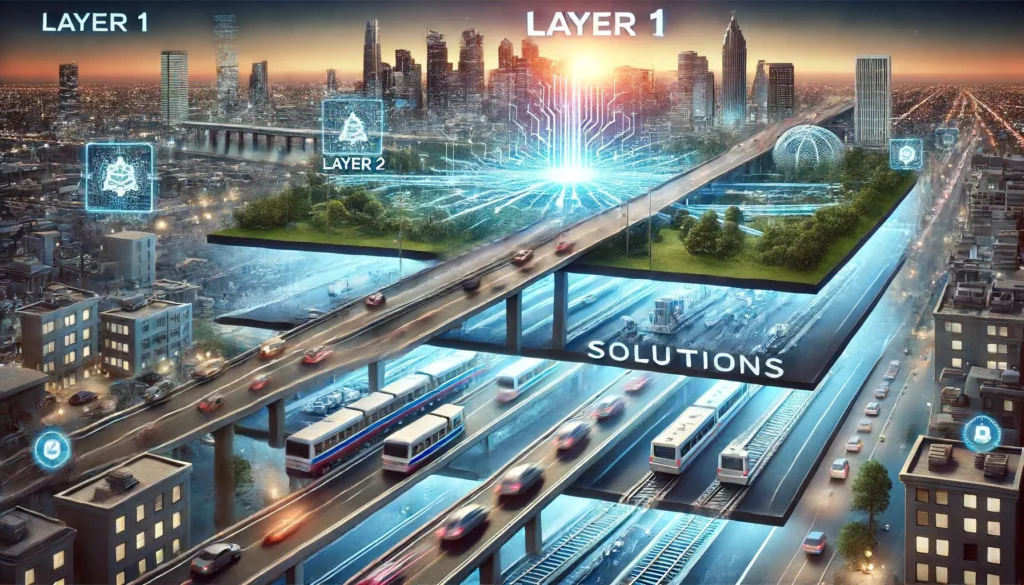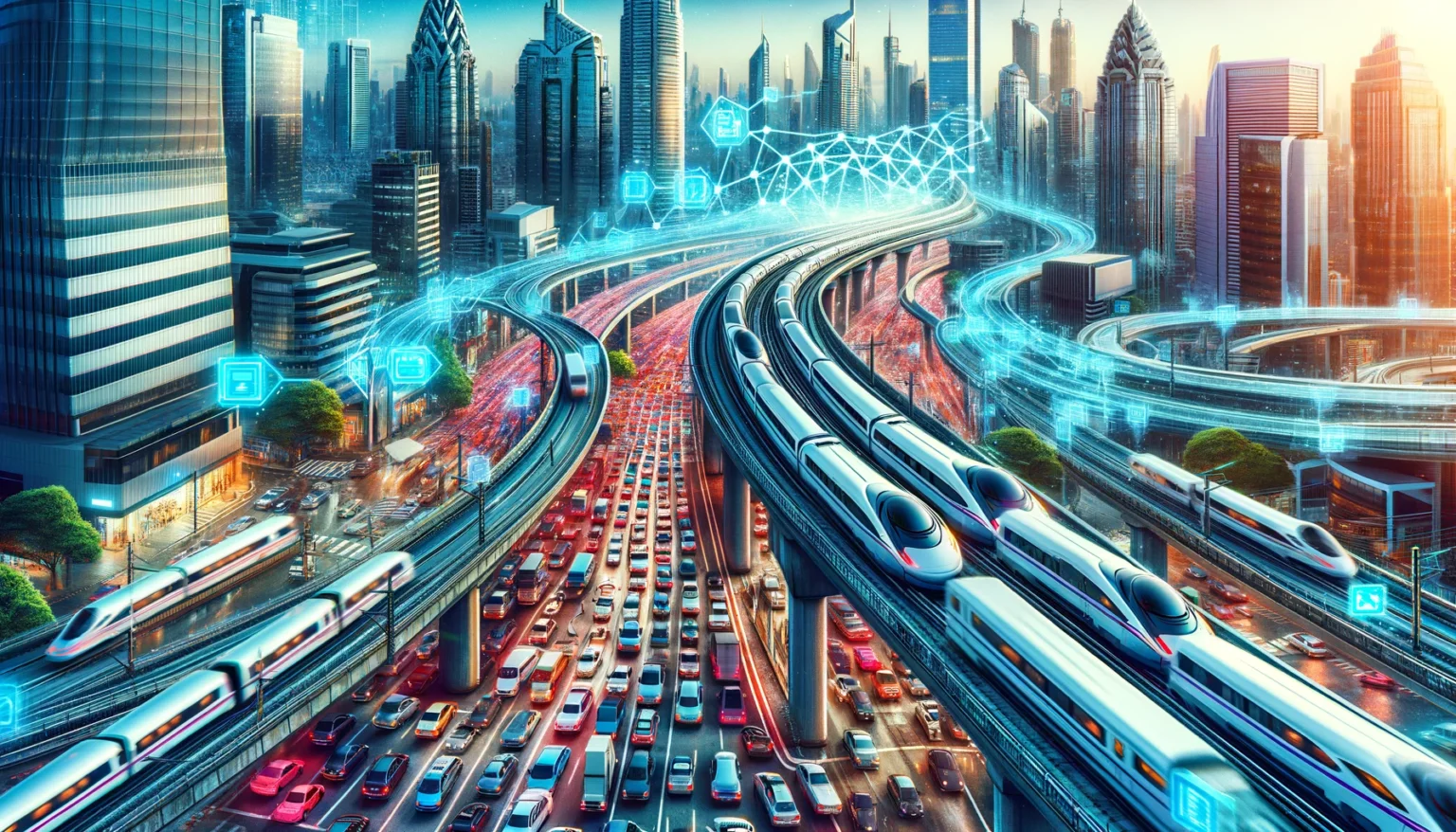The Magic of Layer 2 Chains: Making Blockchain Faster and Cheaper
Imagine you live in a bustling city where traffic jams are the norm. Every day, you spend hours stuck on the road, inching forward at a snail’s pace. Frustrating, right? Now, imagine that instead of expanding the crowded streets, the city planners build a network of high-speed trains that run above the city. These trains can carry people quickly to their destinations without getting stuck in traffic. This is a lot like what Layer 2 chains do for blockchain networks. Let’s dive into this fascinating world and see how it all works.
The Blockchain Traffic Jam
First, let’s understand the problem. A blockchain is like a public ledger where every transaction is recorded. The most well-known blockchain is Bitcoin, but Ethereum is also a major player, enabling smart contracts and decentralized applications (dApps). Every transaction on these blockchains needs to be verified by many participants (miners or validators), which can take time and consume a lot of resources.
Imagine you’re in a grocery store, but instead of having multiple checkout lines, there’s only one cashier. Whether you’re buying a pack of gum or a full cart of groceries, everyone has to wait in the same line. This causes long delays and can be very costly, especially if you’re in a hurry. Similarly, as more people use Ethereum, for example, the network gets congested, making transactions slower and more expensive.

Enter Layer 2 Chains
Layer 2 chains are like the high-speed trains in our city analogy. They run on top of the main blockchain (Layer 1) and handle many transactions off the main network, only interacting with it when necessary. This significantly reduces congestion and lowers costs. Think of Layer 1 as the main roads and highways, and Layer 2 as an efficient train system that helps people avoid traffic jams.

There are several types of Layer 2 solutions, but today, we’ll focus on a specific type called zk-Rollups, with zkSync being a popular example. But before we get into zk-Rollups, let’s quickly explore the broader landscape of Layer 2 solutions.
Different Types of Layer 2 Solutions
- State Channels: Imagine a bar tab. Instead of paying for each drink separately, you open a tab and settle the total amount at the end of the night. State channels allow two parties to conduct many transactions off-chain and only record the final result on the blockchain. Example of these channels is Raiden Network (RDN).
- Plasma: Think of Plasma as a mini-blockchain within the main blockchain. It processes transactions separately and only periodically communicates with the main blockchain to ensure everything is correct. Example is OMG. Formerly known as OmiseGO, the OMG Network utilizes Plasma to achieve high throughput and low-cost transactions. It processes transactions off-chain and periodically submits a batch of transactions to the Ethereum mainnet for final settlement, much like a mini-blockchain within the main blockchain.
- Rollups: This is where things get interesting. Rollups bundle or “roll up” many transactions into a single batch and then submit this batch to the main blockchain. There are two main types of rollups: Optimistic Rollups (like Arbitrum) and zk-Rollups (like zkSync). While both aim to scale Ethereum, they use different methods to achieve this.
Understanding zk-Rollups
Let’s dive deeper into zk-Rollups, particularly zkSync, to see how they work and why they’re so exciting.
Zero-Knowledge Proofs
To understand zk-Rollups, we first need to grasp the concept of zero-knowledge proofs (zk-proofs). Imagine you have a secret and you want to prove to someone that you know this secret without revealing what it is. This might sound impossible, but zero-knowledge proofs make it possible.
A zero-knowledge proof allows one party to prove to another that they know a value (the secret) without disclosing the value itself. It’s like proving you have the answer to a puzzle without showing the actual solution. This cryptographic magic is the foundation of zk-Rollups.
How zk-Rollups Work
zk-Rollups bundle hundreds or even thousands of transactions into a single batch. Instead of verifying each transaction individually on the Ethereum mainnet, they create a cryptographic proof that all the transactions in the batch are valid. This proof is then submitted to the Ethereum blockchain.
Here’s a simplified step-by-step process of how zk-Rollups work:
- Aggregation: Multiple transactions are collected off-chain.
- Proof Generation: A cryptographic proof (zk-proof) is generated to verify the validity of these transactions.
- Submission: The zk-proof, along with minimal transaction data, is submitted to the Ethereum mainnet.
- Verification: Ethereum verifies the zk-proof, which is much quicker and cheaper than verifying each transaction individually.
This process dramatically reduces the load on the Ethereum network, making transactions faster and cheaper.
zkSync in Action
zkSync is a specific implementation of zk-Rollups designed to be user-friendly and developer-friendly. It aims to bring Ethereum’s scalability and affordability to the masses without compromising on security.
Here’s why zkSync is a game-changer:
- Low Fees: By batching transactions and only submitting the zk-proof to the Ethereum network, zkSync significantly reduces gas fees.
- High Throughput: zkSync can process thousands of transactions per second compared to Ethereum’s current limit of about 15 transactions per second.
- Security: Since zkSync uses the Ethereum mainnet to verify zk-proofs, it inherits the same level of security as Ethereum itself.
Imagine paying for a cup of coffee with Ethereum. Without zkSync, the transaction fee could be more than the coffee itself. With zkSync, the fee becomes negligible, making micro-transactions viable.
The Broader Impact of Layer 2 Solutions
Layer 2 solutions like zkSync are crucial for the future of blockchain technology. Here’s why:
Scalability
Scalability is a major hurdle for blockchain networks. Without it, blockchains can’t support mass adoption. Layer 2 solutions enhance scalability, making blockchains capable of handling millions of users and transactions without breaking a sweat.
Lower Costs
High transaction fees are a significant barrier to entry for many users. Layer 2 solutions lower these costs, making blockchain technology accessible to everyone, from individual users to large enterprises.
Improved User Experience
Slow and expensive transactions can be frustrating. By making transactions faster and cheaper, Layer 2 solutions improve the overall user experience, encouraging more people to use blockchain-based applications.
Greater Innovation
With the scalability and cost issues addressed, developers can focus on creating innovative applications that leverage blockchain technology. This could lead to breakthroughs in various industries, from finance to supply chain management, gaming, and beyond.
Real-World Examples and Applications
Let’s look at some real-world examples to see how Layer 2 solutions like zkSync are making a difference:
Decentralized Finance (DeFi)
DeFi platforms allow users to borrow, lend, and trade assets without intermediaries. However, high fees and slow transactions can hinder their usability. zkSync enables faster and cheaper transactions, making DeFi more accessible and efficient.

NFT Marketplaces
Non-fungible tokens (NFTs) represent ownership of unique digital items like art, music, and collectibles. High transaction fees on the Ethereum network have been a major pain point for NFT creators and buyers. Layer 2 solutions like Arbitrum reduce these fees, enabling more artists to participate in the NFT space.
Gaming
Blockchain-based games often require frequent micro-transactions, which can be prohibitively expensive on the Ethereum mainnet. By leveraging layer 2 solutions, game developers can provide a seamless and cost-effective experience for players.
Micropayments
Services that rely on micropayments, such as tipping content creators or paying for digital goods, benefit immensely from the low fees and high throughput of Layer 2 solutions. zkSync and strk like networks make it feasible to send tiny amounts of money without losing a significant portion to transaction fees.
The Road Ahead
The development of Layer 2 solutions is a rapidly evolving field. As technology advances, we can expect even more efficient and innovative ways to scale blockchain networks. Here are some future trends to watch:
Interoperability
Different Layer 2 solutions may eventually become interoperable, allowing users to move assets seamlessly between them. This would create a more connected and efficient blockchain ecosystem.
Enhanced Privacy
Zero-knowledge proofs not only improve scalability but also enhance privacy. Future developments could further leverage zk-proofs to provide more secure and private transactions.
Broader Adoption
As Layer 2 solutions mature, we can expect broader adoption across various sectors, from finance to entertainment, healthcare, and beyond. This will bring blockchain technology into the mainstream, transforming how we interact with digital services.
Regulatory Clarity
As blockchain technology becomes more widespread, clearer regulations will emerge, providing a more stable environment for developers and users. This will help drive further adoption and innovation.
Conclusion
Layer 2 chains, particularly zk-Rollups like zkSync, are revolutionizing the blockchain space. By addressing the issues of scalability, cost, and user experience, they are paving the way for the mass adoption of blockchain technology. Just as high-speed trains alleviate traffic congestion in a busy city, Layer 2 solutions make blockchain networks faster, cheaper, and more efficient. As we continue to explore and develop these technologies, the possibilities are endless. Whether you’re a developer, a user, or simply a curious observer, the world of Layer 2 chains offers an exciting glimpse into the future of digital transactions and decentralized applications. So, hop on board and get ready for a smoother, faster, and more affordable blockchain journey!
